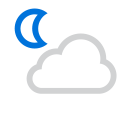Current Weather in SouthKorea
 Partly Cloudy
Partly Cloudy26.5°C79.7°F
- Current Temperature: 26.5°C79.7°F
- Current Feels‑Like Temperature: 28°C82.3°F
- Current Humidity: 63%
- Minimum Temperature/Maximum Temperature: 22.3°C72.2°F / 32.6°C90.7°F
- Wind Speed: 3.2km/h
- Wind Direction: ↑ From the West
(Data Time 09:00 / Data Retrieved 2025-09-03 05:00)
Climate‑Related Culture in SouthKorea
The cultural and meteorological awareness of Korea towards its climate is formed through the coexistence of various weather phenomena, while being influenced by the clear transitions of the four seasons and urbanization.
Climate Sensibility Associated with the Seasons
Transition and Characteristics of the Seasons
- Spring is characterized by the blooming of cherry blossoms and forsythia, as well as preparations for yellow dust (spring yellow dust) becoming commonplace.
- Summer includes long rains and high humidity due to the monsoon, with customs of enjoying cold noodles and shaved ice (patbingsu) to cool off.
- Autumn features clear air and the tradition of autumn foliage viewing, along with the Chuseok (Korean harvest festival) moon-viewing events.
- Winter is marked by cold waves and snowfall, with a culture that enjoys snow and ice festivals (Daecheongryeong Ice Festival).
Seasonal Events and Traditions
Local Customs and Festivals
- Flower festivals on the vernal equinox (cherry blossom festivals) and flower-viewing events at Haneul Park.
- During the summer solstice, the Dano festival (tano) includes the use of iris baths and martial arts games.
- Chuseok (harvest festival) involves ancestral worship and traditions of admiring the full moon.
- On the winter solstice (dongji), it is customary to eat red bean porridge (patjuk).
Daily Weather Awareness
Weather Forecasts and Daily Habits
- There is a high frequency of using rain cloud radar apps, and people are sensitive to the timing of bringing in laundry.
- People check information on PM2.5 and yellow dust, utilizing masks and air purifiers.
- Choosing seasonal clothing is done by considering temperature, humidity, and air quality (PM values) comprehensively.
Preparedness for Natural Disasters
Measures for Typhoons, Heavy Rain, and Yellow Dust
- During the typhoon season (summer to autumn), evacuation advisories and disaster prevention messages are important parts of daily life.
- During heavy rain, discussions revolve around enhancing drainage facilities and flood control measures for subways.
- When yellow dust arrives, closing windows and operating air purifiers becomes routine.
Modern Challenges of Weather Culture
Effects of Urbanization and Climate Change
- In urban areas like Seoul, the heat island effect is pronounced, with less nighttime temperature drop.
- The increase in extreme weather due to climate change (heavy rain and heatwaves) is impacting daily life.
- The tourism and agricultural sectors are advancing in demand forecasting and planning optimization using weather data.
Summary
| Element | Content Example |
|---|---|
| Seasonal Sensibility | Spring yellow dust measures, summer cold noodles, autumn Chuseok moon viewing, winter ice festival |
| Seasonal Events | Cherry blossom festival, Dano festival, Chuseok, winter solstice red bean porridge |
| Daily Awareness | Rain cloud radar, yellow dust, PM2.5 checks, clothing adjustments |
| Disaster Preparedness | Typhoon evacuation advisories, heavy rain drainage measures, yellow dust mask habits |
| Modern Challenges | Heat island effect, increase in extreme weather, utilization of weather data |
Korea's climate culture merges traditional seasonal sensibility with modern urban life, fostering responses to diverse weather phenomena and a sense of beauty.